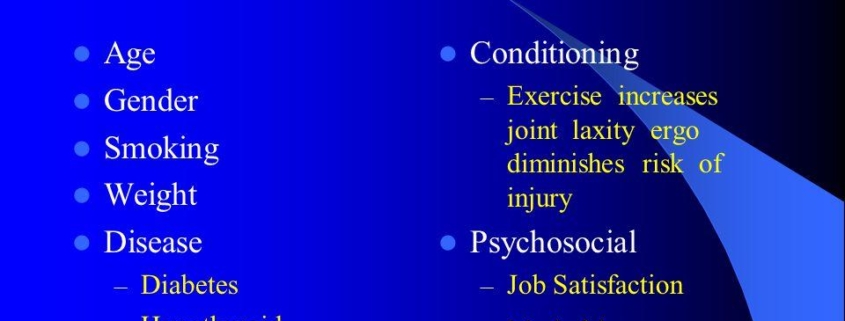
Cumulative Trauma Disorder
Overview
Cumulative Trauma Disorder (CTD), also known as Repetitive Strain Injury (RSI), is a term that encompasses a variety of conditions resulting from repetitive motion and overuse of certain body parts. These conditions often affect the musculoskeletal system and can cause a range of symptoms that can significantly impact a person’s lifestyle. Millions of people worldwide suffer from CTD, highlighting the importance of understanding and managing this condition effectively.
Types
There are various types of CTD, including:
– Carpal tunnel syndrome: Affects the wrist and hands, commonly seen in those who perform repetitive tasks like typing.
- Tendinitis: Inflammation of the tendons, often affecting those who engage in repetitive physical activities or sports.
– Bursitis: Inflammation of the bursae (small fluid-filled sacs) typically located near joints, frequently seen in athletes or individuals who perform repetitive physical tasks.
– De Quervain’s tenosynovitis: Affects the tendons on the thumb side of your wrist, mostly seen in those with occupations requiring pinching or grasping actions.
Causes
CTD is mainly caused by:
– Repetitive movements: Actions that involve the same motion over and over again can strain the muscles and tendons.
– High-force activities: Activities needing considerable force, especially when done repeatedly, can lead to CTD.
– Awkward postures: Maintaining unnatural or uncomfortable positions for extended periods can strain your musculoskeletal system.
Symptoms
CTD encompasses a broad variety of symptoms, depending on the specific disorder. Common symptoms include:
– Pain or tenderness in the affected area
– Swelling or inflammation
- Decreased strength or mobility
- Tingling or numbness
– Fatigue
Diagnosis
CTD is usually diagnosed based on the patient’s history, symptoms, and physical examination. Your healthcare provider may perform various tests, such as:
– Blood tests to rule out other conditions
– X-rays or other imaging procedures to visualize the affected area
– Nerve conduction studies to evaluate nerve function
Treatment Options
CTD treatment approaches can vary, including:
– Conservative management: Rest, ice, compression and elevation (RICE), physical therapy, and pain management through over-the-counter or prescription medications.
– Lifestyle modifications: Ergonomic adjustments at work or home, regular breaks during repetitive tasks, and exercises to strengthen affected areas.
– Surgical treatments: In severe cases, surgery may be required.
Living With Cumulative Trauma Disorder
Living with CTD can be challenging. However, with proper management, most people can lead normal, comfortable lives. Useful tips include:
– Practicing good posture
– Regularly stretching and exercising
– Taking regular breaks during repetitive activities
– Reducing repetitive or forceful movements whenever possible
– Using assistive devices, like ergonomic keyboards, to reduce strain
When to Seek Help
CTD can get progressively worse without proper management. Seek immediate medical attention if you experience:
– Persistent or worsening symptoms, even after rest and over-the-counter treatments
– Severe pain or swelling
– Difficulty moving affected body parts
– Symptoms affecting your ability to complete daily tasks or activities.
Cumulative Trauma Disorder is a prevalent issue, but with correct knowledge and professional help, managing this condition becomes more straightforward.
